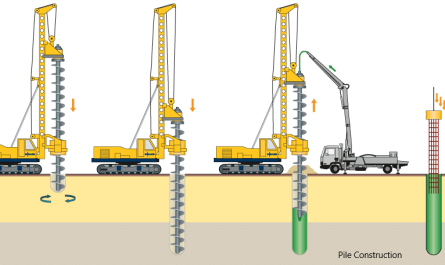 Introduction
Introduction
Automated Guided Vehicles (AGVs) have been around for decades, primarily serving industrial applications like moving parts between assembly lines. However, technological advancements are enabling AGVs to take on more complex tasks and expand into new areas beyond traditional manufacturing. AGVs are becoming smarter, more autonomous, and better equipped to operate safely alongside human workers. This article examines how AGVs are evolving and the growing role they are playing in various industries.
What are AGVs?
AGVs , or AGV, is a driverless, computer-controlled load carrier used to transport materials around facilities. AGVs use guidance technologies like magnetic tape, laser guidance, indoor GPS, or vision systems to navigate predetermined paths and transport payloads without onboard drivers or operators. Guidance sensors allow AGVs to recognize their locations and obstacles and safely maneuver around facilities.
AGVs were first introduced in the 1960s for material handling tasks in tightly controlled industrial environments. Early AGVs followed wired tracks or magnetic guidance strips on floors to shuttle parts between departments or assembly lines. Modern AGVs have advanced well beyond wired tracks and can autonomously navigate dynamic environments using optical or laser-based guidance. Onboard computers allow AGVs to interact with other equipment, operate elevators/conveyors, and collaborate with humans and robots.
Expanded Roles for AGVs
Traditionally, AGVs were used in repetitive, well-defined applications like transporting boxes or parts between fixed points in a plant. However, as guidance and navigation technologies progress, AGVs are taking on more complex roles:
Mobile Robots and Warehouse Automation
E-commerce growth has driven demand for automated order fulfillment using fleets of cooperative robots and AGVs. Mobile robots pick, transport, and deliver inventory inside warehouses, improving throughput and productivity. AGVs use vision, lasers, and navigation software to autonomously move boxes between stations and coordinate movements with other equipment. Some models can lift over 5,000 pounds and integrate with conveyors, sorters, and pick systems.
Healthcare and Logistics Applications
AGVs now assist in hospitals and medical labs by transporting supplies, linens, specimens, and even medications between departments. Their use reduces turnaround times and improves workflows. Logistics hubs also utilize AGVs for transporting goods to and from loading docks, trailers, and storage shelves. Some models can load/unload themselves to streamline material flows.
Job Site Logistics
In construction, AGVs transport materials, tools and equipment between buildings under construction. This allows workers to focus on assembly and improves safety by removing the need for manual hauling over uneven terrain. AGVs integrated with job site layout and project data help optimize material movements.
Benefits of AGVs
The flexibility and intelligence of modern AGVs delivers many advantages for facilities and supply chains:
Improved Operational Efficiency
AGVs work 24/7 to move items quickly and consistently. They don’t require breaks, sick days or overtime pay like human counterparts. Using AGVs for repeatable tasks frees up people to focus on more complex duties. Fleets of autonomous vehicles operate smoothly together to streamline material and product flows.
Space Utilization
Where space is limited, vertical lift AGVs can transport goods between floors, allowing facilities to maximize cubic footage. AGVs travel along the most direct routes and nest tightly when not in use. This improves space usage versus traditional conveyor or storage systems.
Safety Enhancements
Avoiding manual hauling reduces the risks of workplace injuries like muscle strains and falls. AGVs incorporate safety features like anti-collision sensors, emergency stop buttons, and personnel detection to coexist with humans. Vision systems allow AGVs to recognize obstacles and people in their paths.
Enhanced Data Insights
AGVs equipped with sensors, tags and onboard computers generate valuable data about their loads, routes, environment and performance. Analytics of material flow patterns reveal inefficiencies and bottlenecks. Resources like energy and fleet sizes can be optimized based on usage patterns.
Challenges for Adoption
While AGVs deliver clear benefits, some challenges still inhibit wider adoption across industries:
High Upfront Costs
A fleet of AGVs and required infrastructure like charging stations or lift equipment represents a sizable capital investment versus continued spending on labor. Extended ROI timelines can deter some smaller companies.
Facility Constraints
Narrow aisles, tight corners, elevators, and docks present navigation challenges, limiting AGVs to newer, purpose-built facilities. Retrofitting existing buildings requires extensive revisions and approvals.
Technical Support Needs
Despite advances, AGVs still require ongoing support from controls engineers and fleet managers to monitor performance, maintain guidance systems, and troubleshoot any integration issues. Not all companies have in-house expertise.
Human-Robot Collaboration
Ensuring safe interaction between AGVs and co-workers demands advanced obstacle detection, environmental mapping, controls authentication, and emergency responses. Strict protocols and staff training are essential.
Outlook
AGVs With ongoing progress, more industries will adopt AGVs to optimize operations, empower human workforces, and support growth. Costs will decline as fleets expand and technology matures. Standardized interfaces and enhanced intelligence will reduce demands on technical staff. Legislative support for collaborative robotics will spur adoption. Overall, the role of AGVs in logistics, warehousing, healthcare and construction can only increase in coming years as a key driver of operational excellence.
*Note:
1. Source: Coherent Market Insights, Public sources, Desk research
2. We have leveraged AI tools to mine information and compile it


